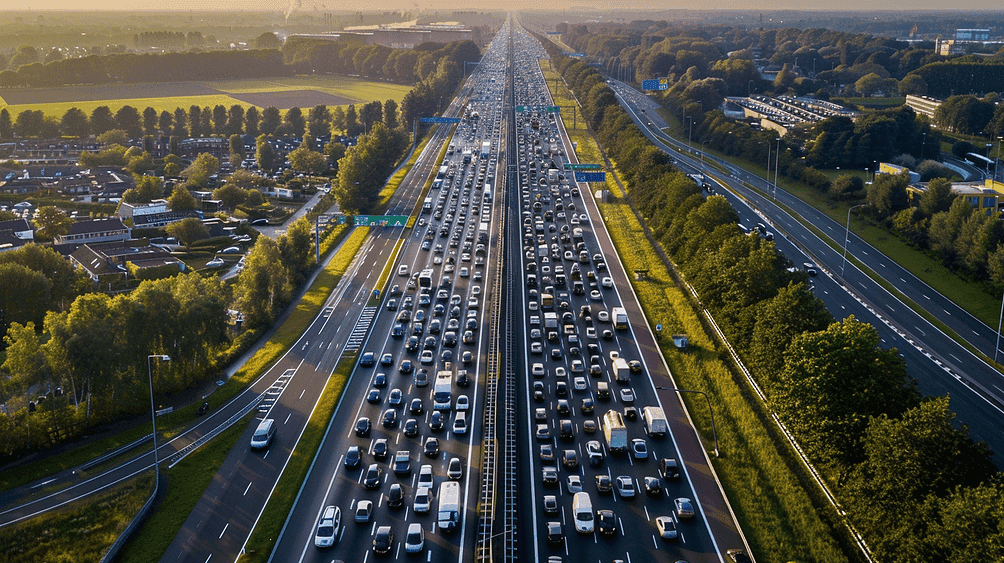Road pricing: the cure is worse than the disease
Road pricing sounds fair and smart, until you realize that it is expensive, undermines privacy, and results in more stationary cars.
Published on October 25, 2025

Carlo van de Weijer has a master’s degree in mechanical engineering from the Eindhoven University of Technology and a PhD degree with honors from Graz University of Technology. He has broad experience in the automotive industry. Currently, he is the Managing Director of the Eindhoven AI System Institute (EAISI).
Just before election time, it pops up again, on the right and even more so on the left: the plan to make highway users pay taxes differently. Less for ownership, more for use. Those who drive a lot pay more; those who leave their cars at home pay less. On paper, this is as logical as it is tempting. And with the rise of electric cars, which pay much lower excise duty than cars with combustion engines that run on gasoline or diesel, it seems like a neat solution to the disappearing billions. A fair system, modern and technologically smart.
Nevertheless, my urgent advice is to refrain from doing so.
The problems start with the implementation. A fair system with peak and off-peak rates or differentiation based on emissions requires the government to know exactly where and when every car is driving. That means every car must be equipped with a device that continuously transmits location data to a central database.
There are major objections to this. A database that knows when you drive to work, which sports club you visit, and which friends you visit is a recipe for data leaks, hacks, and abuse. It is a slippery slope that we, as free citizens, should avoid. Something for which strict European privacy regulations exist for good reason.
Research agency Decisio wondered whether such a system relies on technology or on citizens. Their analysis confirms that the social objections to permanent digital surveillance are significant and justified.
Extremely expensive monitoring device
An alternative is to simply use the odometer, as is the case with trucks, where only the number of kilometers driven counts, not the time or place. This does not allow you to levy rush-hour or regional rates, which leads to regional inequality and negates the greatest added value of road pricing. But it would distribute the tax more fairly between frequent and infrequent drivers. However, that system is also susceptible to fraud, and therefore involves sealed boxes, random checks, and inspections. This is easier with trucks: their journeys are already recorded, and the number of vehicles is relatively limited. The extra costs are offset by the revenues. The situation is different for passenger cars. There are millions of privately owned vehicles, where privacy, control, and enforcement are much more sensitive issues. We are building an extremely expensive control system solely for the purpose of collecting taxes, something that is currently done virtually free of charge through periodic deductions from fixed car taxes.
Paying according to usage is by no means free. According to estimates, implementation will cost between €500 and €750 million per year, to be collected on top of existing car taxes. That money will not go towards road safety or infrastructure, but towards administration and ICT.
And I dare to question its effectiveness. We are talking about a variable rate of less than ten cents per kilometer, which will not significantly change people's driving habits or reduce the amount they drive. A fuel-powered car pays that amount in excise duties per kilometer. And if those few cents do have an effect, it will also lead to more stationary cars, because ownership will become cheaper while use is discouraged. Those extra stationary cars will exacerbate the space-consuming problem of our mobility. This will mainly occur in residential areas and city centers, where space is already scarce.
Good enough
The current system of fixed monthly taxes not only taxes driving, but also parking and space use. A simple adjustment to compensate for the loss of excise duties from electric drivers is sufficient: increase road tax, as was done with LPG. Provided it is introduced gradually, with increasingly cheaper electric vehicles, this will not disrupt the transition to electric driving. Such an electric motor vehicle tax is simpler and, above all, much cheaper.
With the hundreds of millions we would then save on boxes and monitoring, we could do something useful. For example, make a thousand unsafe intersections safer or build a thousand kilometers of new bike paths every year. That is a much more effective investment in fair mobility.
Pay-as-you-go sounds rational and is certainly fairer, but in practice, it is a risky, expensive, and privacy-sensitive experiment with little effect and unintended disadvantages. Sometimes the old system is not perfect, but simply good enough.
